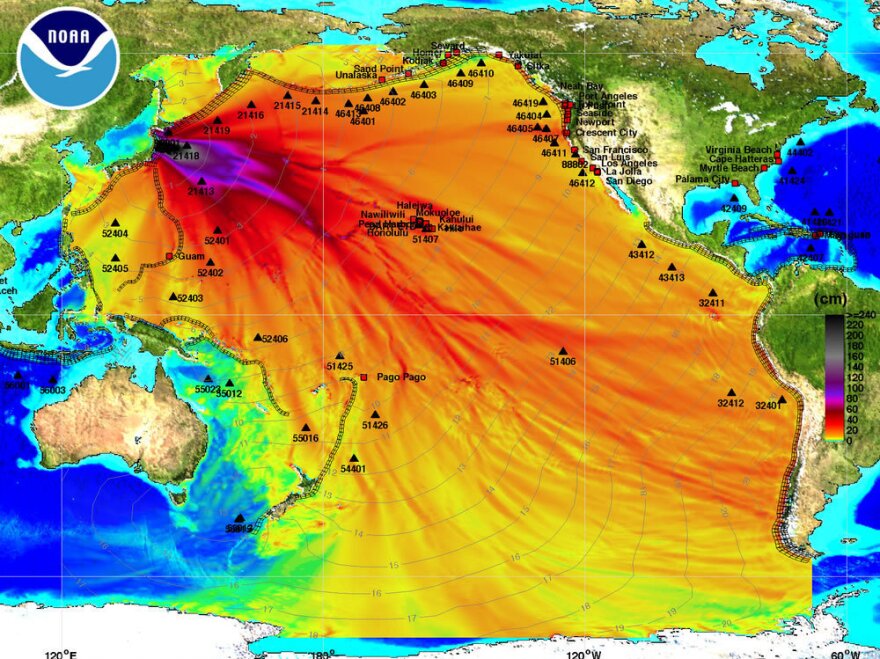The 8.9 magnitude earthquake that struck off Japan was on par with the 8.8 magnitude earthquake that hit Chile around this time last year. "A quake of this size can be devastating, or it doesn't necessarily have to be," because infrastructure preparations can mitigate some of the damage, NPR Science Correspondent Richard Harris tells Renee Montagne. So "the ground shaking is not necessarily the biggest issue," Harris says.
Harris says that looking at maps of the ground shaking, it's evident that there was shaking over a very large area of Japan. "But most of the shaking was moderate — it didn't hit the severe, violent marks that mark really devastating earthquakes from ground shaking."
Friday's massive earthquake was centered around 80 miles east of the northeast coastal city of Sendai, Japan. That offshore epicenter raises the potential for generating underwater landslides or big waves that can propagate over thousands of miles of ocean.

Though much of Japan has been built to withstand strong earthquakes and tsunamis, Harris says that when the quake is so close to land, there's very little time to react. Police report finding some 200 to 300 bodies in Sendai alone, and the death toll is expected to continue to climb.
Across the ocean, the first waves have hit Hawaii and many other Pacific Islands, and so far the surge in sea levels has been mild to moderate.
The tsunami that raced its way through the Indian Ocean in 2004 had a death toll in the hundreds of thousands, as there was incredibly dense populations near the shoreline. Experts don't expect the damage from this earthquake and tsunami to approach that seen in 2004. In that earthquake about 900 miles of fault line slipped, creating an enormous wave. That wasn't the case in Friday's quake.
Copyright 2023 NPR. To see more, visit https://www.npr.org. 9(MDM3NjYwMjA5MDE1MjA1MzQ1NDk1N2ZmZQ004))



